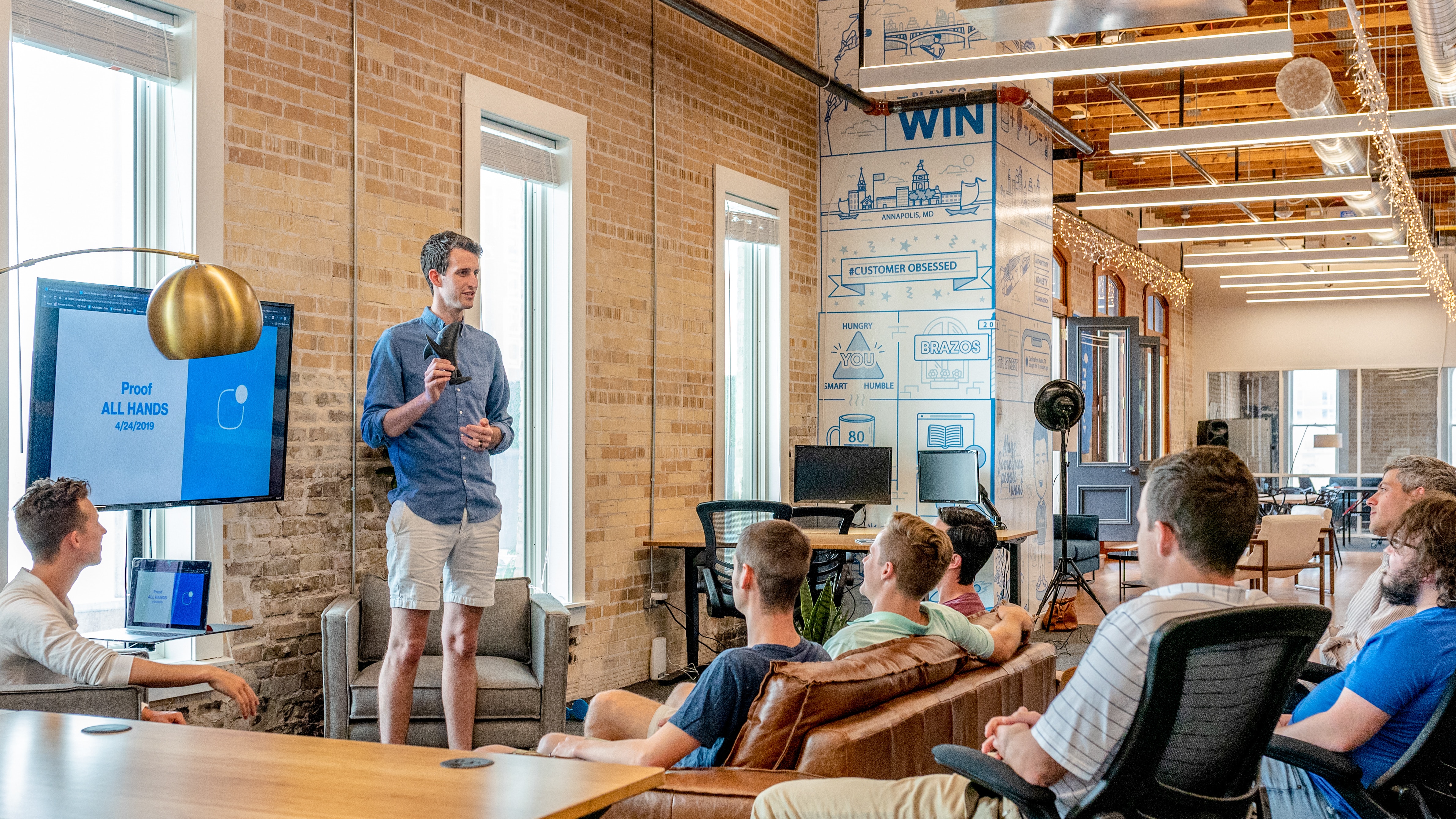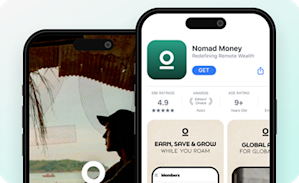Communities & Memberships
Community of Practice (Definition + CoP Framework)
Learn what a community of practice is and a framework to help you launch a new one or revitalize an existing one.
Author
Mighty Team
Last Updated
February 6, 2025

A community of practice is a useful way to organize a community within a professional domain. Great communities of practice provide space for members to be vulnerable and get support, as well as to learn and grow in a shared discipline.
In this article, we’ll talk about:
What a community of practice is
The advantages of a CoP
Community of practice examples
A community of practice framework
What is a community of practice?
A community of practice (CoP) is a social group with common interests, goals, passions, and/or professional field whose members share experiences, compare notes, and learn collaboratively. Communities of practice can be used to share knowledge, best practices, and insights–helping the group master something interesting together.
Communities of practice WORK because the theory behind it shows us that learning isn’t just about acquiring knowledge. Learning is fundamentally a social activity. So joining a learning community–even as an adult–is an amazing way to grow in something that’s important to you. As a result, belonging to a CoP can improve learning outcomes while creating a sense of group identity.
Usually, we talk about a community of practice as needing three things:
Domain: The shared interest, subject, profession, etc. that brings members together.
A group of people who come together to share ideas and experience.
Practice: The activities of the group (e.g. discussions, conferences, Q&As, etc.)

What a community of practice does
Supports: A CoP creates support and encouragement so you don’t have to struggle to learn alone.
Promotes shared experience: Group members share experiences which accelerates other members’ learning.
Generates new perspectives: Hearing about how others have solved the problems you face gives members new solutions.
Helps you learn from others’ mistakes: Learning from our mistakes is powerful. If you can learn from others’ mistakes, it saves you from making those mistakes.
Creates a sense of belonging: A CoP is a way to develop and perform identity, and because of that it gives people a chance to belong.
Developing a field: New ideas, fresh approaches, the symbiosis of a CoP can push fields forward
Situated learning theory and communities of practice
The idea of a community of practice was introduced by Jean Lave and Etienne Wenger in their 1991 book on situated learning. The idea was connected to practice theory, recognizing that learning is embodied within the world we live in–it comes with relationships, power dynamics, and all the messy human stuff.
The work was also important for recognizing that “peripheral participation”--when participants are first getting accustomed to a new group–was a valuable part of learning too. As a result, the CoP isn’t just important for core members, it can be really valuable for peripheral people too.
“Learners inevitably participate in communities of practitioners and that the mastery of knowledge and skill requires newcomers to move toward full participation in the sociocultural practices of a community.” Situated Learning - Jean Lave & Etienne Wenger

Community of practice examples
eXd Community: Empowers educators to create transformative, equity-centered schools and organizations.
Designing the New Legal: Teaches people across various roles in the legal industry about how anti-racism and technology can change the legal system for the better.
Indie Birth Association: Brings together doulas, midwives, and pregnant and birthing women with resources and support around autonomous birth.
Tuft the World: A free community for aspiring and experienced rug tufters and fiber enthusiasts hoping to connect across the globe.
Academy to Innovate HR: Gives HR professionals the tools to expand their skill set and boost their careers.
Octo Members: provides UK-based financial services professionals with resources for personal and professional growth.
Common domains for a community of practice
Healthcare
Education
Information technology (IT)
Human resources (HR)
Project management
Marketing and communications
Finance and banking
Legal professionals
Sustainability experts
DEI & Inclusion experts
Social work
Urban planning
Non-profits
Entrepreneurship

Learning in community = CoP
Many communities function as a community of practice without the participants realizing it. Most traditional classrooms work like communities of practice. Voluntary groups can too. There's a good chance you belonged to a community of practice without realizing it.
For example, could these be considered communities of practice?
Parents play groups: it gets the kids playing, but parents often share their joys and pain as well as things they are learning (hopefully how to get baby to sleep through the night!)
Religious services: participating in religious service might mean learning and sharing experiences.
Sports teams: playing on a sports team has a community of practice element to it. Come together, share techniques, and play.
Each of these examples has elements of a community of practice–each has a domain, a community, and actual practice involved. That means that a lot of the spaces we join can function as communities of practice without us knowing it.
But often, we think about communities of practice as formal groups, created and maintained intentionally. And that’s okay too.

Online communities of practice
Communities of practice can be hosted online or offline, but let’s take a minute to consider online communities of practice. Just teaching has been transformed by online learning platforms, blended learning, and asynchronous teaching, communities are being transformed by the web too.
And this includes communities of practice. It’s becoming easier than ever to find community platforms and create digital content. So naturally, new online communities of platforms are growing–both on social media and dedicated community software.
Here are some of the advantages to creating a community of practice online:
Unite practitioners around the world: Even the most niche community of practice can work if you draw from practitioners around the globe. And global perspectives are fascinating too.
Take advantage of asynchronous: While communities of practice can meet live in a room, adding on things like online forums and discussions creates more opportunities for busy people to connect–without needing to meet in real-time.
Real-time info sharing: No need to wait until the next meeting of a community of practice. Participation online can happen when the feeling strikes.
Real engagement: Online CoPs often see more engagement because the structure and easy access (e.g. with a community app), makes it easy to engage.
Accessibility & Inclusion: Online communities of practice can be more accessible and inclusive too. What if it’s difficult to physically get to meetings? What if it’s expensive? What if meeting rooms aren’t accessible? What if parents have to pay for babysitting? There are a whole set of accessibility and inclusion concerns that can be addressed with online meetings.
Convenience: And even if there aren’t accessibility concerns, sometimes an online community of practice is just more convenient.
The beauty of different: Communities of practice set in your hometown are fine. But there can be a richness in different online CoPs, hearing perspectives from around the world or different approaches from other regions.

Community of practice framework
While there’s no one right way to build a community of practice, this community of practice framework can help you launch a new CoP or revitalize an existing one.
1. Identify Purpose and Objectives
Every community of practice has a rallying cry, a defining purpose behind it. It’s the thing members get excited about and get behind.
If you’re trying to organize a community of practice, a solid Big Purpose is a big place to start.
Choose a Big Purpose that goes further than the mechanics of your meeting. “We meet Tuesdays to talk about counseling” won’t cut it.
You can use the three parts of a community of practice above to break this down:
Domain: What topics or fields of knowledge will the community cover?
Community: Who is in the community? What type of people will it bring together?
Practice : What activities will the community do?
If this seems too easy, that’s because it is. A constituting purpose doesn’t have to be complicated. In fact, the simpler the better.
2. Identify the Ideal Member
Every community needs an Ideal Member. It’s the person who most needs to be in, and can best contribute.
Build your community of practice around an Ideal Member. At this point, it’s a good idea to interview some potential members. Find out their pain points. Find out what they want to learn. Find out what they’d show up to talk about.
Spending a few short interviews can be a huge help for setting up a CoP.
But sometimes, it’s not necessary. Many communities of practice grow organically out of existing communities, conferences, live events, and more. If you’ve got a group of Ideal Members forming organically, you might be ready to go.
3. Leadership
Set your leadership structure for a community of practice–if applicable. For large CoPs, this might include a leadership team or board. For smaller communities it might just mean assigning a regular chairperson.
If your CoP leadership is going to be led by a team, you might set up regular meetings of the team and set goals.
But do try to think about keeping leadership light and agile. Communities of practice can be really valuable without complicated leadership schemes–and leadership energy is often better spent on the CoP itself instead of the leadership bureaucracy.
4. Establish a platform
Your CoP needs to meet somewhere and somehow.
If you’re meeting in person, this could mean setting up a meeting time and place. For example, this could be:
Around a regular conference or event (e.g. an industry meeting)
Somewhere that fits your CoPs schedule (e.g. An office CoP could meet on lunch hour)
If you’re meeting online, you’ll need to decide how to organize and plan asynchronous and/or synchronous meetings and conversations.
For example, you could consider:
Which of these is right for you and your community? It depends. Hopefully from doing the practice of finding your Ideal Member, you’ll have a pretty good idea of their needs and preferences for connecting. Find something that fits.
5. Create Guidelines and Structure
Most communities benefit from having community guidelines to set the ground rules and expectations. While it’s tempting to think of setting rules as being heavy handed, they actually create an environment of trust where people feel safe to participate—IF they are communicated and enforced. If your community is online, you should include moderation as well.
When people feel safe from bullying, discrimination, mocking, etc., they’re more likely to contribute in a meaningful way.
The second thing you can set up is a group structure. Each community of practice is different, but here are some of the structural things you might consider building in:
Regular set meetings
Monthly expert guests
Learning sessions & workshops
Task forces of working groups
Open discussion forums
Community “listening”
Mentorship programs or buddies
Feedback sessions
Monthly or quarterly themes
Skill-learning sessions
Social and networking events

6. Launch and Promote
Once everything is in place, you can launch the community of practice. Consider a live or virtual launch event to bring people together and create hype. It could include guest speakers or networking space. Let the launch itself provide value, which helps make it a success but also sets the tone for future meetings.
Whether you want to promote a community of practice will depend on your goals. But if you want to grow, here are some ways to market your community of practice:
Invite people directly (especially your Ideal Members you interviewed).
Create a free event or webinar.
Invite an industry expert to speak.
Email existing lists or subscribers.
Advertise in trade magazines or relevant websites.
Have a booth or presence at a relevant conference.
7. Build a knowledge database
Some communities of practice will choose to build a knowledge database–some way of collecting and sharing knowledge. This could be through shared content, notes, courses, or a shared guide.
A community of practice can and should create new ideas and new solutions to problems, so a knowledge database is great for:
Creating an “institutional memory”
Catching new members up on past discussions
Using previous work and sessions to solve problems as they arise

8. Collect feedback
As you go about hosting a community of practice, it’s important to collect feedback from members about what’s working and what isn’t. This may be best done anonymously, especially for a large CoP.
You can:
Use a survey mechanism like SurveyMonkey to collect anonymous feedback.
Use platform features (e.g. polls and questions) to collect feedback.
Set up member interviews or informal feedback sessions.
Ask for feedback during live meetings.
9. Recognition and celebration
Some communities of practice choose to celebrate excellence in their industries with awards and recognition. This could mean recognizing group members for their work. It could mean identifying a company or organization in the community doing great work and celebrating them. The idea is that–as you develop excellence and mastery of your subject together–celebrating that excellence both in your group and outside is a great way to recognize people and organizations working hard in your field.

10. Evolve and grow
Any type of thriving community requires growth and evolution. Goals change. Members evolve and grow. New members join with new visions.
A community of practice can and should evolve with your practice, constantly becoming what members need from it.
Ready to start?
If you’re ready to start your own online community of practice, come give Mighty a try! Mighty is an all-in-one community platform with discussion forums, built-in virtual events, courses, member profiles and management tools. It also comes with Mighty Co-Host™, an AI community cohost that puts your growth on autopilot–helping to boost human creativity without replacing it.
You can try Mighty Networks free for 14 days–no credit-card required.
Ready to start building your community?
Start a free 14-day trial to explore Mighty—no credit card required.
More like this
Join Mighty Community
Learn the principles of Community Design™ (and see them in action) alongside thousands of creators and entrepreneurs. It's free to join!

Online Courses
Creating a Course
Teaching a Course
Course Platforms
Selling a Course
Communities & Memberships
Community Platforms
Managing a Community
Building a Community
Growing a Community
Monetizing a Community
Content Creation
Creators & Entrepreneurs
Monetization
Content Creation
Starting a Business
Website Builders
Creating & Managing a Website
Events
Event Platforms
Hosting & Marketing Events
Branded Apps
Creating a Mobile App
Coaching Apps
Community Apps
Coaching
Mastermind Groups
Starting a Coaching Business
Coaching Platforms
Filter by Category
Online Courses
Communities & Memberships
Creators & Entrepreneurs
Events
Branded Apps
Coaching
Build a $1 Million Community
This free masterclass went viral—sign up to learn why.

























